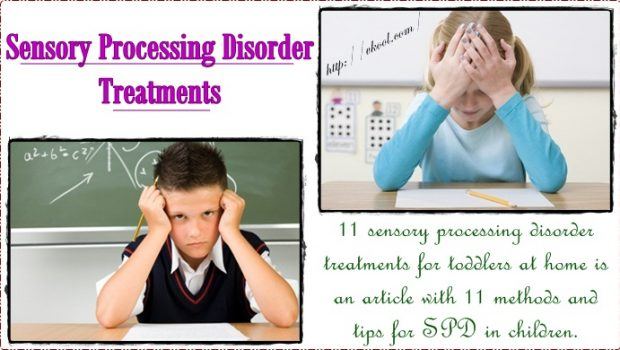
Sensory Processing Disorder (SPD), also known as sensory integration disorder, is a serious phenomenon that often occurs to children and directly effects on their daily routine. It is when a child’s brain cannot process the information received from the senses adequately thereby being unable to control his or her acts. When a child suffers from this disorder, he or she will have certain problems and extreme meltdowns with daily tasks, which gives negative effects on his or her activities at home and school.
Sensory Processing Disorder treatments have been studied for a long time in order not only to get the children out of their difficulty but also to reduce the stress of their parents and teachers who are responsible for their daily routine. Although they are overwhelmed by their children’s disorder, they are also the ones who can guide them toward improvements. The Sensory Processing Disorder treatments can be done at home by taking control of their family’s routines and trying certain therapies on their children that may occupy much of time but be fun and rewarding as well.
At present, VKool.com would like to should you 11 sensory processing disorder treatments for toddlers at home. Besides 11 specialized treatments and tips for this disorder, all the health information about the children with it is also indicated. For parents whose children are suffering from Sensory Processing Disorder, take a look at the article to know more treatments to deal with it completely.
11 Sensory Processing Disorder Treatments For Toddlers At Home
1. Focus On Your Child
Sensory Processing Disorder is one of the serious Conditions & Diseases In fact, Sensory Processing Disorder does not associate with IQ of the children, which means children who suffer from this condition are not less or more intelligent than their friends. However, they need to be taught in other ways in which their sensory processing systems are able to absorb information. In addition, occupational therapists may help them learn exact responses to certain stimulants.
Depending on what your child’s need is, the aims of Sensory Processing Disorder treatments are different. There are often 2 cases in which children with Sensory Processing Disorder have opposite symptoms. More clearly, while some children intend to avoid senses expressed through the feeling of shy with textures and noise, the others intend to seek senses by always keeping them busy by going faster and pushing harder. It is not difficult to observe which one your child belongs to so that you will apply reasonable treatments for his or her condition. The things you have to do are identifying what your child wants to do feel, securing him or her, and giving him or her opportunities to complete. For example, your child may need quiet time under a warm blanket, special headphones in order to inhibit the noises when studying, or a few minutes on a mini trampoline. You can absolutely satisfy his or her favor as a way of Sensory Processing Disorder treatments but remember to ensure his or her safety.
Learn more: memory improvement tips & games for children
natural home remedies for wheezing in children & adults
2. Practice Basics
In cases your child is experiencing an occupational therapy, one of the Sensory Processing Disorder treatments, you should carry out any exercises the Occupational Therapist recommends. In this occupational therapy, therapists often use an approach of sensory integration that originates in a stimulating and controlled environment. Therefore, a child’s senses will be challenged by fun and stimulating activities while not overwhelming them and causing feelings of failure. And the final goal of this therapy is to extend these appropriate responses he or she learned in his or her home, school, and wide life but not only in the clinic.
If the therapist does not give you any recommendation, you should also spend time guiding your child to practice several tasks like getting clothes, putting on socks, eating on his own, and fastening buttons. The most important thing is keeping you patient and not frustrated despite his struggles and always encouraging him instead. In fact, children with Sensory Processing Disorder easily get discouraged with anything they do, thus, your patience and support are really an effective treatment indeed. In addition, you should talk your child in various ways then stick to a routine that helps him or her feel good through the day.
Read more: reasons to own a pet for children
3. Integrating Therapy
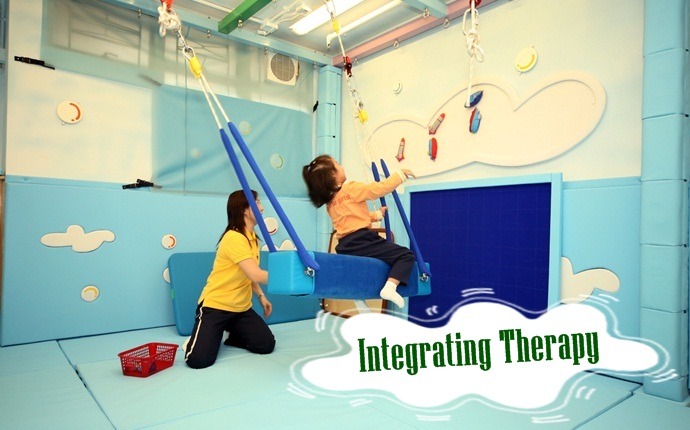
Among the Sensory Processing Disorder treatments, sensory integrate therapy is also widely applied.
In fact, the idea of this therapy is using resistive body work with specific movement activities, and brushing of the skin to support a child with Sensory Processing Disorder to experience a high level of regulation and arousal. According to some occupational therapists, this therapy can rewire the brain of children with the disorder so that they can integrate and respond to information input easily and appropriately. That means they have both sense and feel of safety in their lives. In other words, this therapy helps them reduce anxiety thereby being more confident, interactive, and successful.
According to several books whose topic is Sensory Processing Disorder treatments, there are certain activities for children with this disorder. More clearly, it is necessary for them important to get sensory input and get moving. For example, taking them to participate in some unstructured plays at playground or swing on swings is good ways to make them focus and reset. You can also let them play in the bathtub with unscented shaving cream or make a bowl of Jello with pieces of fruit or candy buried in it for them to dig out.
See more: home remedies for migraines relief
4. Make Your Own Tools
The children suffering from Sensory Processing Disorder need various toys as well as therapy tools to help them overcome the sensory difficulty. In fact, it is not harmful to use certain sensory toys and they really work well for these children. This kind of toys is quite expensive, thus, you can think about creating something around your house to make them toys. For example, you can abuse a ball of silly putty or a bowl of rice with little odds and ends as special toys or effective Sensory Processing Disorder treatments. You will then fill a bin with certain objects and toys that are arranged in various weights and textures like silk scarves and rubbery bouncy balls.
Learn more: common signs of autism in toddlers and solutions
5. Sensory Organizing
Sensory organizing is another of the Sensory Processing Disorder treatments. This is a system that parents use to satisfy a child’s needs as well as create an environment with minimum challenges and maximum strengths. The system includes routines and prioritizing tasks with simple and short steps. For example, you can divide the clean laundry into several steps like bringing laundry to the room, separating clothes into groups, and putting them into bins as marked so that your child will be easy to complete. However, for a child who is overstimulated, his or her parents should have other steps to restrict the sensory information they may take in as well. That means depending on what type of Sensory Processing Disorder, parents have to apply suitable methods for their children so that they can recover and back to the normal life.
Read more: How to get rid of motion sickness naturally
6. Sound-Blocking Headphones
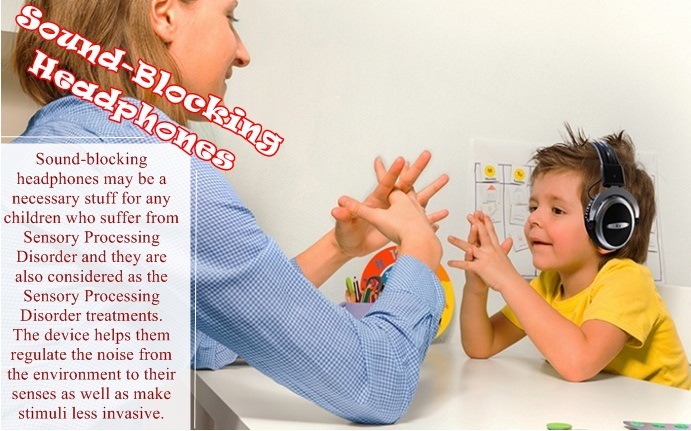
Sound-blocking headphones may be a necessary stuff for any children who suffer from Sensory Processing Disorder and they are also considered as the Sensory Processing Disorder treatments. The device helps them regulate the noise from the environment to their senses as well as make stimuli less invasive. In addition, getting on tag-free clothing which is loose fitting is also helpful. Remember to keep a scarf on your nose or a favored sachet in the pocket so as to prevent offending odors. It is advised to buy sunglasses for your child in advance because they may certainly need them under bright lights and take frequent breaks visiting some large and overwhelming places. Finally, you should decorate the kitchen creatively and prepare unappealing foods in order mask their texture as well.
Learn more: unexplainable store MP3 review
7. Balance Sensory Input
In fact, to use sensory integration therapy as one of the Sensory Processing Disorder treatments, an occupational therapist has to use a battery of tests, observations, and interviews of the caregivers to evaluate the child for the thing they call sensory cravings and sensory defensiveness. Sensory input is a complex process with ongoing forensic analysis, which also plays an important role in the essential treatment.
The treatment often takes place with specialized equipment in a setting outfitted, also called a sensory gym. In fact, a child who is hypersensitive or overreactive to vestibular input always needs to spin or swing to retrain his or her brain, which is similar to something a child who is under reactive does. However, there is also the difference that a child who is hypersensitive to movement tends to resist it while a child who is under-sensitive or hypersensitive tends to seek it out. In addition, the sensory gyms are also outfitted with something like squeeze machines and weighted vests to provide deep and calming pressure.
Besides, occupational therapists also use something called “brushing” for the children with low tactile defensiveness as a powerful tool. Most of the parents whose children have experienced occupational therapy have to train to do a particular routine that is called the Wilbarger protocol. This particular kind of routine involves in using a soft-bristled brush that is applied in a certain way to make deep pressure then joint compressions for them several times daily. And there are 5 different brushing protocols depending on the level of sensory responses of a child.
See more: How to expand your mind power without drugs
8. Strengthen Special Awareness
Strengthening special awareness is one of the important Sensory Processing Disorder treatments. While traditional occupational therapists focus on the proprioceptive, tactile, and vestibular systems within the procedure of treatment, pioneering ones aim to the vestibular-visual auditory “triad” that help the children with Sensory Processing Disorder understand the spatial envelope or 3-dimensional space, acquainted sounds around, so that they can perform many important tasks.
According to a book related to the Sensory Processing Disorder treatments, a new therapeutic approach associated with listening programs that use particularly designed CDs along with headphones to help the children exercise certain middle-eye muscles. In this therapy, they may wear the headphones while playing such as bouncing and swinging, just doing crafts, or further activities that increase the integration of auditory input as well as other sensory input.
In fact, the children suffering from vestibular issues are not good at motor skills, low in balance, and alike to be lost in space which is, of course, different from what astronauts experience in the zero gravity. Therefore, a program called Astronauts Training has been created to address this issue by employing things such as spinning to music.
See more: How to discipline children at home and at school – 3 solutions
9. Take Sensory Diet
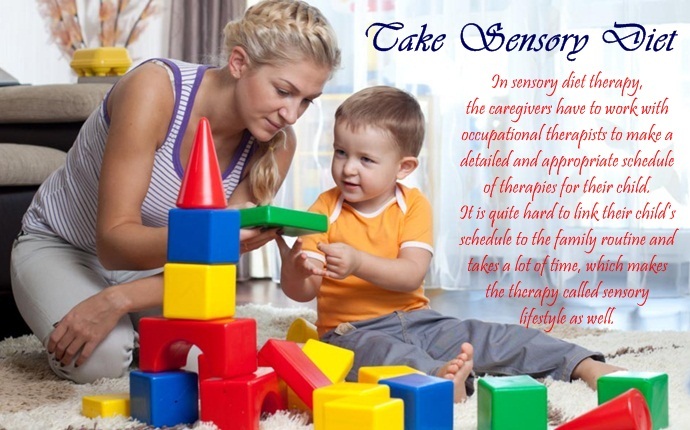
Not only do the specialized therapies play an important role in the Sensory Processing Disorder treatments but the sensory diet is also essential in this procedure. While therapists may only interact with a child for an hour or twice a week, the sensory input therapy is carried out at both the home and school in a consistent period that is regularly called a sensory diet. In sensory diet therapy, the caregivers have to work with occupational therapists to make a detailed and appropriate schedule of therapies for their child. It is quite hard to link their child’s schedule to the family routine and takes a lot of time, which makes the therapy called sensory lifestyle as well.
In this one of the Sensory Processing Disorder treatments, caregivers should make their home more sensory smart as well as adapt themselves to the therapy by reducing visual clutter and creating quiet spaces. And there are some certain items they opt to buy for their child including fidget toys, weighted blankets or vests, pressure garments, and even chewable jewelry that all target to provide regulating input.
A sensory diet is a therapy in which all the suggested activities are gentle and fun thereby making it easy to absorb a range of sensations. For parents, this approach is carried out through activities at home such as listening exercises that are planned to listen to various sound patterns and frequencies in order to improve the brain. In fact, both listening therapy and occupational therapy apply principles of the neuroplasticity theory that asserts that the brain can change depending on a child’s experience. It takes a few years to complete the therapy for some but others need less time to manage symptoms with the therapy.
See more: list of iron rich foods for kids
10. Alternative Therapies
Acupuncture is known as an alternative one of the Sensory Processing Disorder treatments as it helps alleviate the symptoms of this disorder. Although the effectiveness of this method has not been proved yet, the positive results it brings to some can be already seen. In addition, craniosacral manipulation and brushing, or the Wilbarger protocol, have been already proven to be helpful for some individuals as complementary therapies.
Read more: home remedies for pollen allergies symptoms
11. Other Strategies
There will be cases in which children who have absolutely controlled the symptoms of the Sensory Processing Disorder with certain therapy before also need additional treatment when they become older and face new life challenges. It is the time when the symptoms can be triggered even when the patients go to college or do some specific jobs. Not only should additional therapy and counseling be used to reestablish regulation on these symptoms but you should also grow to understand and take new strategies adapting to your new environments. There are some other strategies essential for children with the Sensory Processing Disorder as follows:
- For the tactile-sensitive children: Do some finger-painting activities on the kitchen table and allow them to draw with shaving cream on the bathtub walls.
- For the hyperactive and sensory-seeking children: Ask them to push the shopping cart, carry the laundry basket, or bring the grocery bags to the car.
- For children with poor senses of space and balance: Let them swim, ride horseback, and jump on a trampoline.
Learn more: What is autism spectrum disorder? – definition, symptoms & cures
Recommended article: Common Signs And Symptoms Of Sleep Deprivation
After reading our article on 11 sensory processing disorder treatments for toddlers at home in our main Health page, hope that you all can understand how a child with Sensory Processing Disorder has to experience and treat the condition effectively. It is advised to consult your doctors or medical professionals before going on these suggested treatments. And if you have any question, please leave them below and share with us other Sensory Processing Disorder treatments.
Want More Content Like This In Your Inbox?
- 12 Home Remedies For Ringworm In Children And Adults
- 15 Good Home Exercises For Kids – Easy And Fun
- How to strengthen your mind power – 9 useful tips
- Top 5 hair styles for babies
- List Of 14 Best Finger Foods For Babies
- 29 Easy & healthy cupcake recipes for kids
- 40 Homemade baby puree recipes – best ideas to make
- List of 17 high fiber foods for toddlers that parents should know

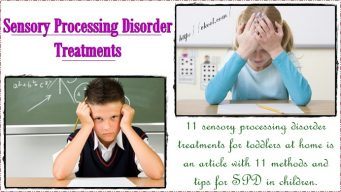













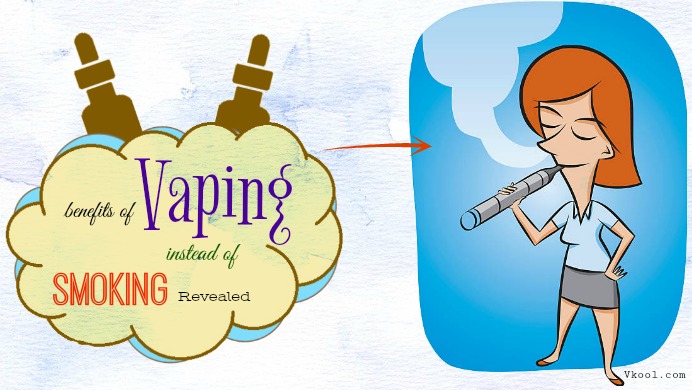






 8 Ways To Use Aloe Vera For Psoriasis
8 Ways To Use Aloe Vera For Psoriasis  Fatty Liver Solution Book Review – Is Duncan’s Guide Useful?
Fatty Liver Solution Book Review – Is Duncan’s Guide Useful?  14 Common Signs And Symptoms Of Heat Stroke
14 Common Signs And Symptoms Of Heat Stroke  12 Natural Tips On How To Use Papaya For Acne Treatment
12 Natural Tips On How To Use Papaya For Acne Treatment  10 Signs And Symptoms Of Magnesium Deficiency In Humans
10 Signs And Symptoms Of Magnesium Deficiency In Humans  Urinate Now Review – Is The Method To Treat Shy Bladder Of Jake Rubin Effective?
Urinate Now Review – Is The Method To Treat Shy Bladder Of Jake Rubin Effective?  Top 20 Benefits Of Magnesium For Health, Skin, And Hair
Top 20 Benefits Of Magnesium For Health, Skin, And Hair  14 Ways To Stop Food Cravings Naturally To Lose Weight
14 Ways To Stop Food Cravings Naturally To Lose Weight  10 Worst Influences On Negative Effects Of Lack Of Sleep
10 Worst Influences On Negative Effects Of Lack Of Sleep  6 Easy And Healthy Egg Fried Rice Recipes To Try At Home
6 Easy And Healthy Egg Fried Rice Recipes To Try At Home